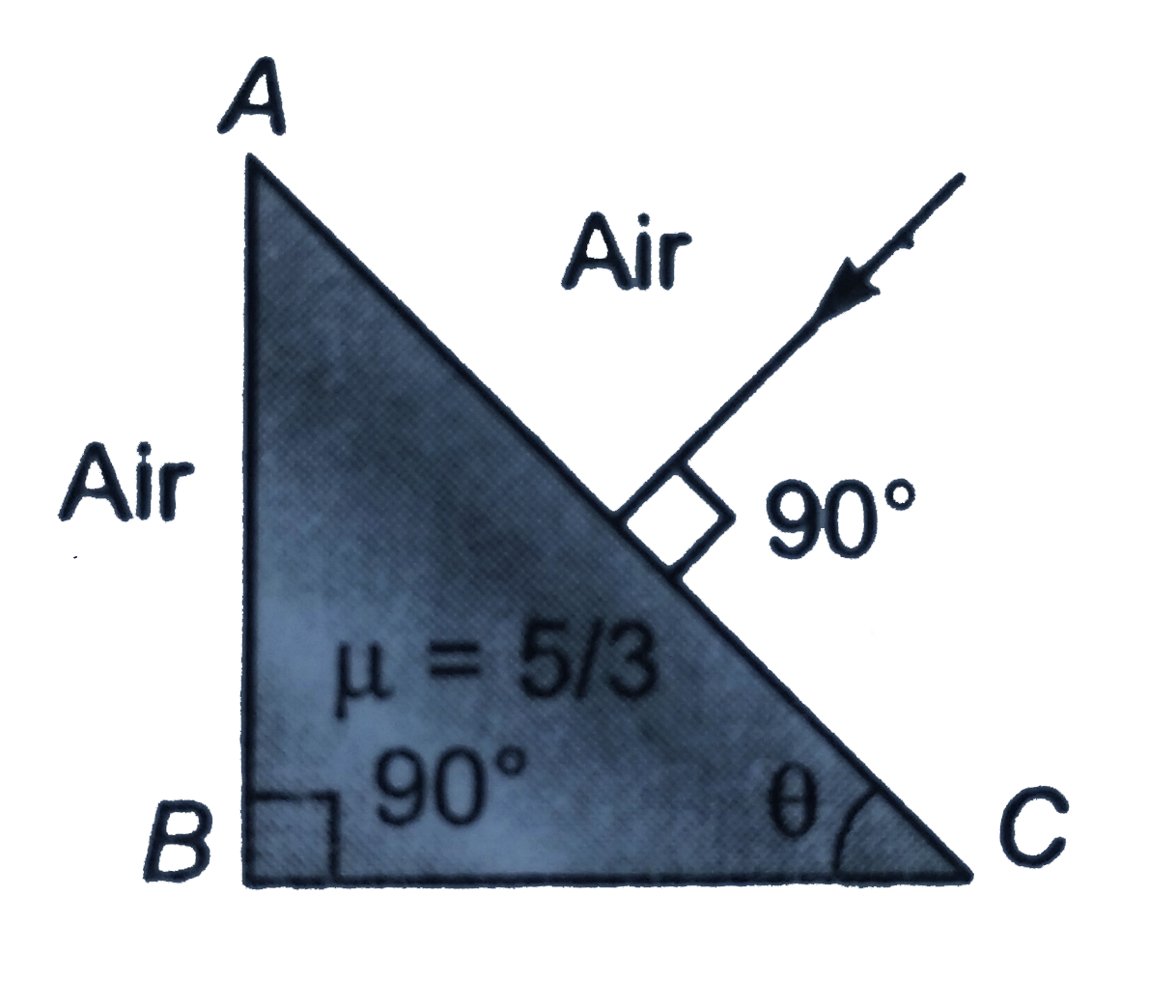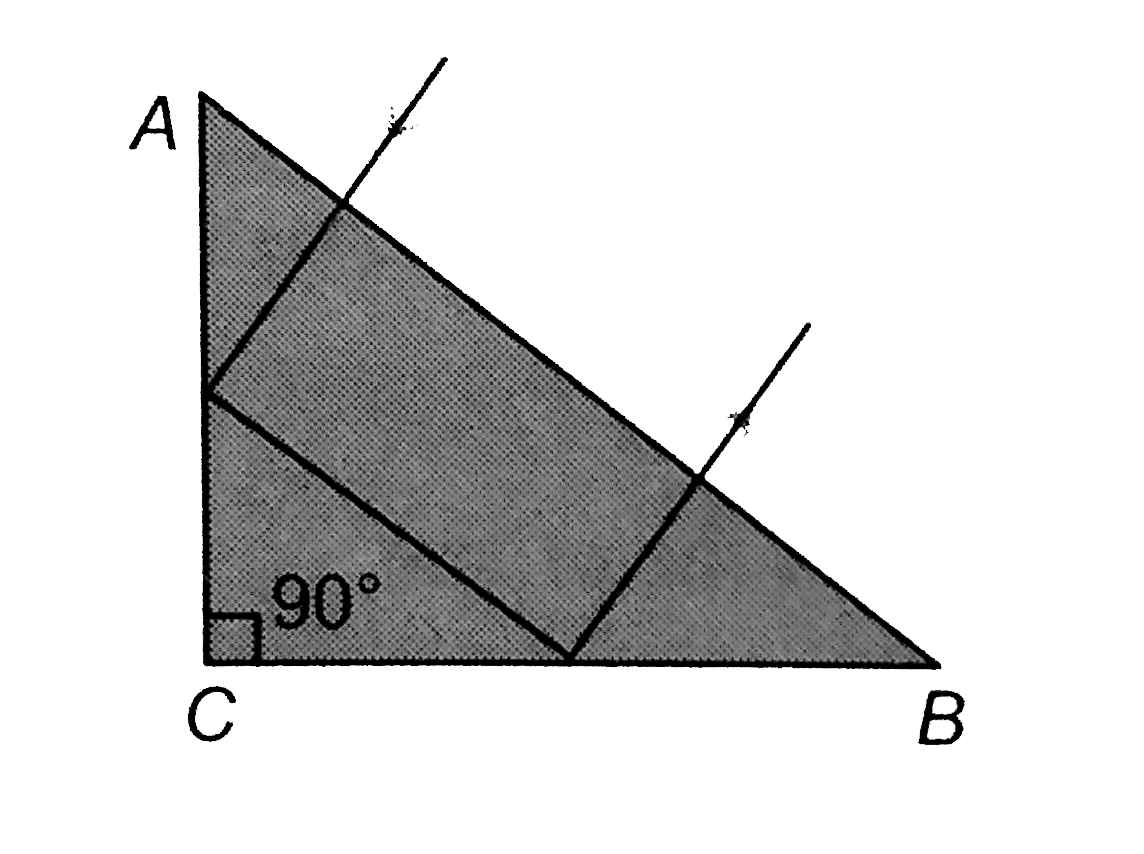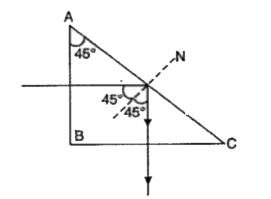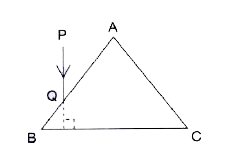A ray of light makes normal incidence on the diagonal face of a right angled prism as shown in figure. If θ=37∘, then the angle of deviation after second step (from AB) is (sin37∘=3/5)

53∘
74∘
106∘
90∘
The correct Answer is:B
i1=0∘
r2=90∘−θ=53∘
θC=sin−1(1μ)=37∘
Since, r2>θC,T/R will take place on the face AB
δ=δAC+δAB
=0+180∘−2r2
=180∘−2×53∘=74∘
Related Playlists
- BOOK - DC PANDEYCHAPTER - REFRACTION OF LIGHTEXERCISE - Single Correct Option3videos
REFRACTION OF LIGHT
- BOOK - DC PANDEYCHAPTER - REFRACTION OF LIGHTEXERCISE - more than one correct option1videos
REFRACTION OF LIGHT
- BOOK - DC PANDEYCHAPTER - REFRACTION OF LIGHTEXERCISE - Subjective Questions8videos
REFRACTION OF LIGHT
- BOOK - DC PANDEYCHAPTER - REFLECTION OF LIGHTEXERCISE - Subjective9videos
REFLECTION OF LIGHT
- BOOK - DC PANDEYCHAPTER - SEMICONDUCTORSEXERCISE - Subjective12videos
SEMICONDUCTORS
Knowledge Check
- Question 1 - Select One
A ray of light makes normal incidence on the diagonal face of a right angled prism as shown in figure. If θ=37∘, then the angle of deviation after second step (from AB) is (sin37∘=3/5)
 A53∘B74∘C106∘D90∘
A53∘B74∘C106∘D90∘ - Question 1 - Select One
A ray of light incident normally on an isosceles right angled prism travels as shown in the figure. The least value of the refractive index of the prism must be
 A√2B√3C1.5D2.0
A√2B√3C1.5D2.0 - Question 1 - Select One
A ray of light is incident normally on one face of a right-angled isosceles prism and then it grazes the hypotenuse. The refractive index of the material of the prism is
A1.33B1.414C1.5D1.732 - Question 1 - Select One
A ray of light is incident normally normallyh on one of the faces of a prism of apex angle 30∘ and refractive index √2. The angle of deviation of the ray is ________________ degrees.
A15∘B30∘C45∘D60∘ - Question 1 - Select One
A ray of light is incident normally on one of the equal faces of a right isosceles prism of refractive index 1.5. The angle between incident and emergent rays is
A45∘B90∘C180∘D0∘
Similar Questions
A ray of light passes through a right angled prism as shown in the figure. State the angle of incidence at the faces AC and BC.
 View Solution
View SolutionA ray of light is incident normally on one of the faces of a prism of apex angle 30 degree and refractive index sqrt2. The angle of deviation of the ray is…degrees.
View SolutionA ray of light is incident horizontally on the face AB of the.right angled prism as shown in the figure. If the ray emerges grazing the surface AC, find the value of ϕ. Refractive index of the material of the prism is given to be n.
 View Solution
View SolutionA ray of light falls on one face of an equilateral prism at an angle of 40∘ and emerges out at an angole of 37∘ What is the angle of deviation through the prism ?
View SolutionA ray of light PQ is incident on the face AB of an equilateral glass prism ABC as shown in the figure. Show that angle of emergence = angle of deviation. Also, with a ray diagram, trace the path of the emergent ray.
 View Solution
View Solution

